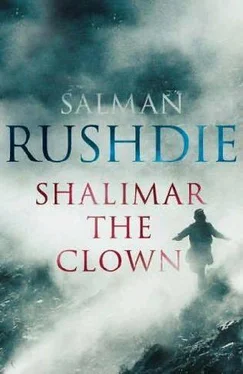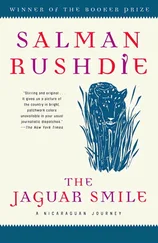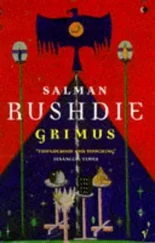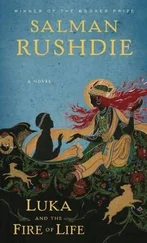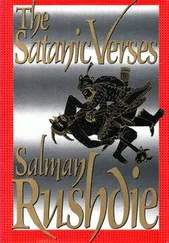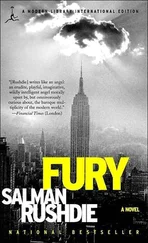The night flight of the Bugatti Racer from Molsheim to Clermont-Ferrand would become one of the grand myths of the Resistance, and in the whispered retelling it swiftly acquired the supernatural force of a fable: the impossible super-speed of the aircraft bulleting the black sky; the low-altitude streak toward freedom that only the most skillful and fearless pilot could have pulled off; the five-hundred-miles-per-hour barrier broken through for the first time in history as the world record was unofficially but unquestionably shattered, and, more important, reclaimed for France from the Germans, thus becoming a metaphor for the Liberation; the daring takeoff from a country road and the even more dangerous dark-of-the-moon landing on the grassy plain down which Julius Caesar’s legions had marched toward the oppidum of Gergovia, where Vercingetorix, the chief of the Arverni, defeated them.
Some of this was certainly true, but in later years Maximilian Ophuls himself seemed prepared to allow the myths to embellish the truth. Had he really broken the record in spite of Finkenberger’s warnings about fuel? Had he really flown at or near rooftop level all the way, or had he escaped radar detection by luck, and on account of the strong element of the unexpected in his dash? In his own memoir of the war years, Max Ophuls clarified nothing, speaking instead with a hero’s modesty of his great good fortune and of the many helpers without whom, and so on. “I thought of Saint-Exupéry,” he wrote. “In spite of the anxious situation I understood what he meant when he spoke in Vol de nuit of flying as a form of meditation. That profound meditation in which one tastes an inexplicable hope. Yes, yes. It was like that.”
Here, again, an ungenerous reader might perceive a calculated merging of Max’s own story with that of another beloved figure. In 1940 the writer and pilot Antoine de Saint-Exupéry played a heroic part in the battle of France, then left with his squadron for North Africa, and later reached New York. He was already famous as the author of Night Flight, but when Max Ophuls in his memoir went on to reference a later Saint-Exupéry book he was guilty of anachronism. At the time of his own flight to Gergovia, Pilote de guerre, published in English as Flight to Arras, was still being written, and even after its publication a year later and its considerable American success it was banned by the Vichy government and the Gallimard edition of 1942 was suppressed. It was therefore impossible for Max Ophuls in the Bugatti Racer to have had any knowledge of its contents. In spite of these awkward details, Max Ophuls unashamedly set down his airborne reflections on a text of which he could not then have been aware. “War, for us, signified disaster. But was it the case that France, to spare itself a defeat, had refused to fight? I do not believe it.” Max reliving his own vol de nuit added approvingly, “As I whistled over the heads of my sleeping countrymen, I did not believe it either. France would soon awake.” The error wasn’t important. He got away with it. Even those critics who spotted the blunder said it was within the bounds of poetic license. A hero was a hero and deserved to be cut a little slack. Max’s book was highly praised and became a commercial success, notably in America. After all, by the end of the war Saint-Exupéry was dead, lost in action over Corsica, whereas Max Ophuls was a living flying ace and giant of the Resistance, a man of movie-star good looks and polymathic accomplishment, and in addition he had moved to the United States, choosing the burnished attractions of the New World over the damaged gentility of the Old.
Once he had landed, the aircraft was quickly concealed in the nearby forest by a small team of volunteers who were nicknamed the Gergovians and led by the redoubtable Jean-Paul Cauchi, the organizer of Combat Universitaire, also known as Combat Étudiant, the Resistance group based at the Strasbourg university-in-exile and answerable to Henri Ingrand, the Chief for Combat Region Six. Max was taken to the forest cottage where his colleagues vice-chancellor Danjon and the historian Gaston Zeller were waiting with a bottle of wine. As his personally forged papers were in the name of “Sebastian Brant” his arrival as part of the Strasbourgeois faculty would need some explanation. He would be described as a scholar from the south, and Danjon, who exercised an almost hypnotic power over the Nazi fellow travelers of Vichy, would square the paperwork. “But you took a stupid risk by giving yourself a well-known name,” Danjon chided him. “One might almost say you yourself traveled here in an airborne ship of fools.” The real Brant was the fifteenth-century Strasbourg author of Stultifera Navis, or Das Narrenschiff (1494), a satire of human follies illustrated in part by the young Albrecht Dürer. Ophuls spread his hands apologetically: yes, it was true, he had made an idiotic choice.
“It will pass muster,” Zeller reassured him. “Nobody you need to worry about round here does any reading at all.”
Not long after his arrival in Gergovie, Max acquired a second false identity. Hungry for revenge, he joined the Action Section of Combat Étudiant under the work-name “Niccolò” and learned about blowing things up. The first and only bomb he threw was built by an assistant named Guibert in the Institute of Chemistry, and its target was the home of Jacques Doriot, a Vichy stooge who ran the pro-Nazi Doriot Association. The explosion-the gigantic excitement of the moment of power, followed almost immediately by a violent involuntary physical reaction, a parallel explosion of vomit-taught him two lessons he never forgot: that terrorism was thrilling, and that, no matter how profoundly justified its cause, he personally could not get over the moral hurdles required to perform such acts on a regular basis. He was moved to the Propaganda Section and in the two years that followed went back to what he knew: the creation of false identities. “The reinvention of the self, that classic American theme,” he would write in his memoir, “began for me in the nightmare of old Europe’s conquest by evil. That the self can so readily be remade is a dangerous, narcotic discovery. Once you’ve started using that drug, it isn’t easy to stop.”
Forgery had become the section’s most important task. As the Resistance became more unified and organized, and the numbers of men and women involved increased, false papers were the essentials without which nothing serious was possible. Combat Étudiant gradually built closer alliances with the intelligence networks of the Auvergne, George Charaudeau’s Alibi network, Colonel Rivet’s Kléber organization, and Christian Pineau’s Phalanx; also with other action commandos, the Ardents whose symbol was the flame of Joan of Arc, the Mithridate and the ORA. This work took Cauchi away from Clermont-Ferrand for long periods and a surly, haughty fellow named George Mathieu deputized for him, actually becoming the acting head of Mithridate. Mathieu was a large man, all bones and teeth. His blue eyes were somewhat bulging and his blond hair was slicked down with macassar oil. He insisted on wearing a beret as a gesture of defiance, and was respected on account of his icy, military manner. His girlfriend Christiane worked in the Vichy offices, as the secretary of a certain Captain Burcez. This seemed like a valuable “inside” connection. At any rate, for a plurality of reasons, nobody questioned Mathieu’s right to lead.
At that time many packages needed to be carried back and forth as the commando attacks grew in frequency and force, and as the German hunt for the Resistance intensified. Max Ophuls decided to stop asking himself what those packages might contain. The couriers needed documents to ensure their safe passage and it was his business to provide them. Then, after the Jews of Paris were rounded up, perhaps one thousand Jewish children escaped the death-trains to Auschwitz; false papers had urgently to be supplied if they were to be brought south to safety. Max Ophuls, whose work was praised by his immediate superior Feuerstein as well as the more exalted, though increasingly remote figures of Cauchi and Ingrand as the best they had seen, created many of these new identities, which he dispatched to their new owners via secret drop points from which they were collected by anonymous go-betweens. But perhaps the greatest contribution Max Ophuls made to the Resistance was sexual; although in order to pull off the feat he had to create yet another phony self and inhabit it fully and, alas, somewhat painfully. He was the man who seduced the Panther, Ursula Brandt.
Читать дальше
